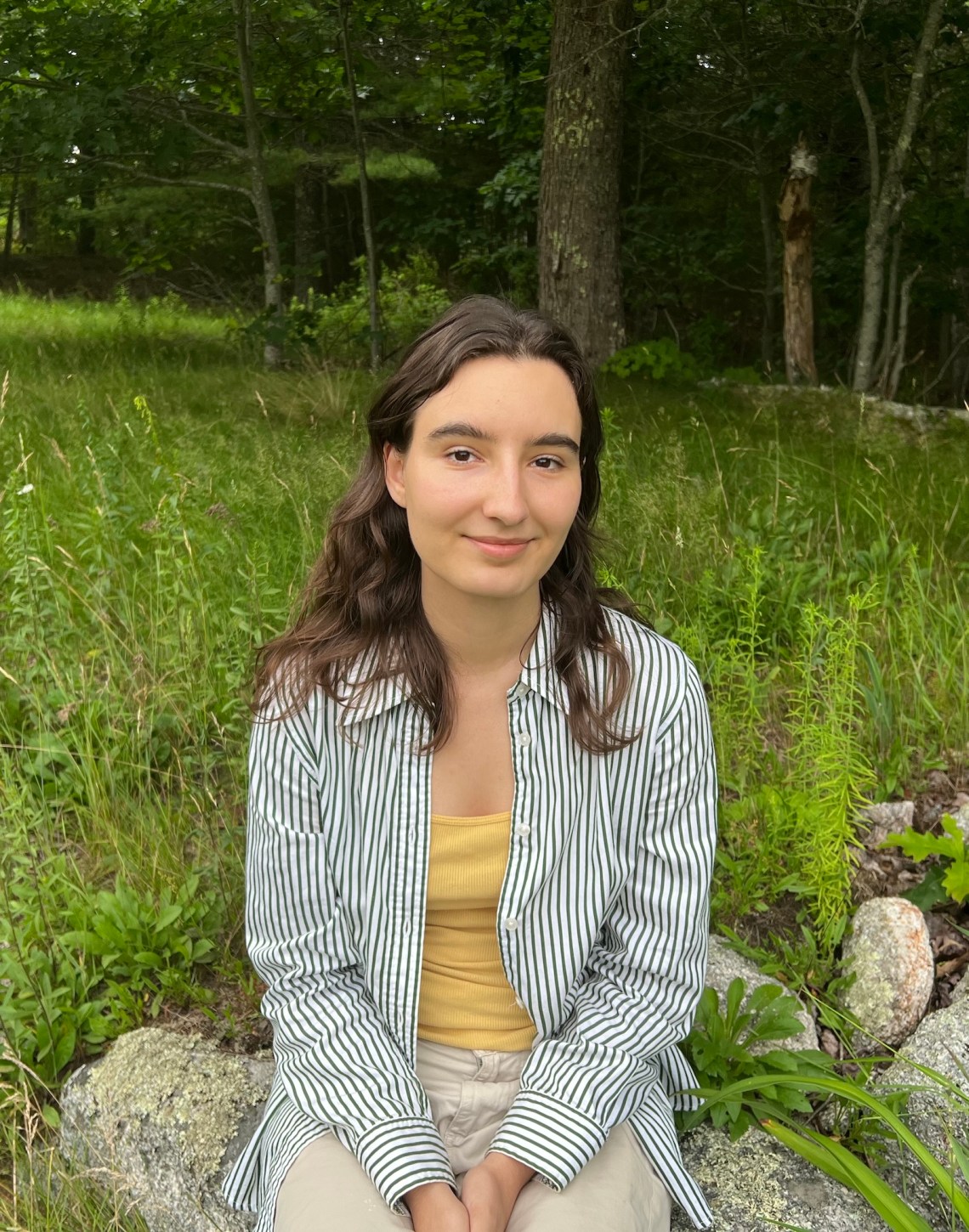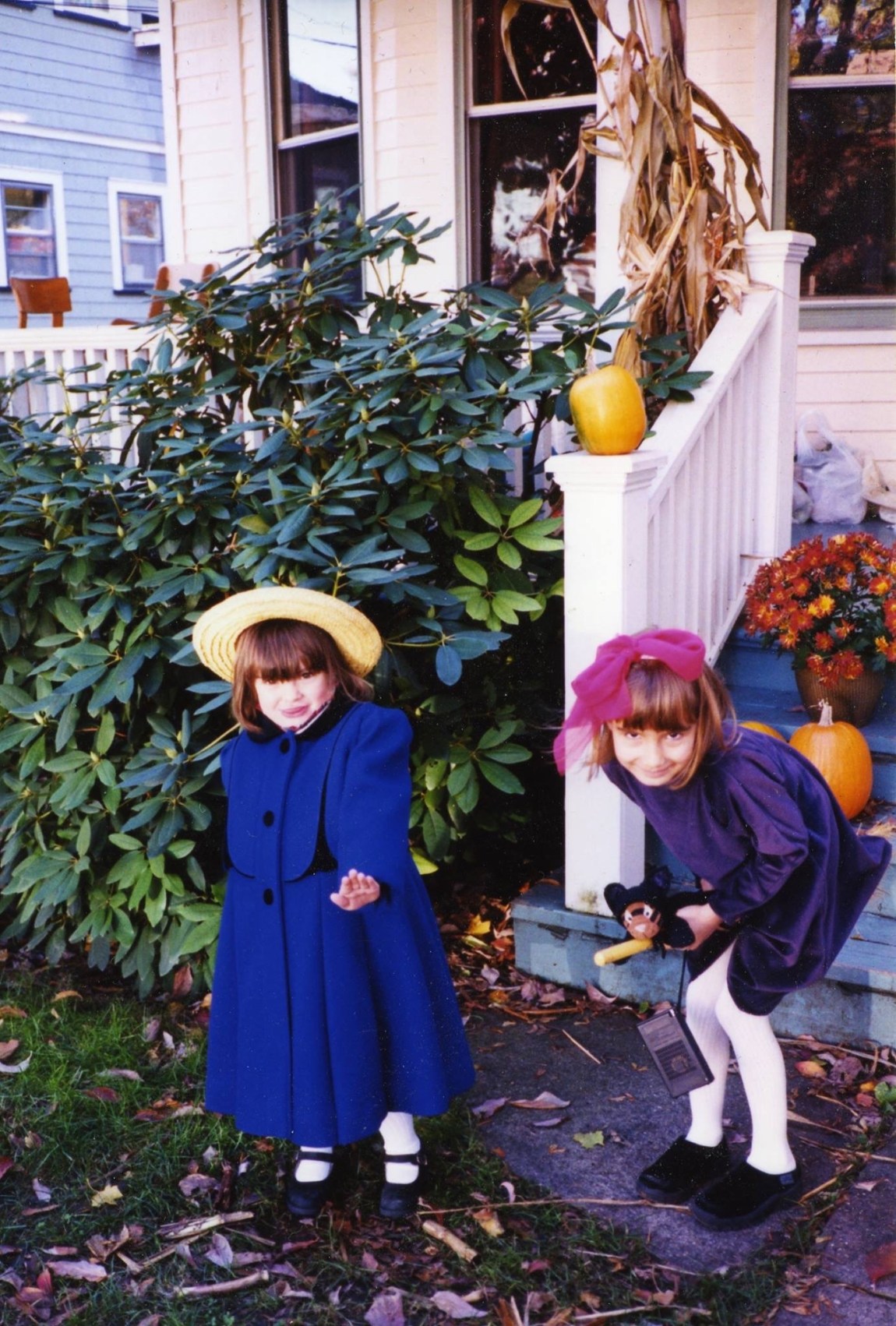This article is part of a regular series of conversations with the Review’s contributors; read past ones here and sign up for our e-mail newsletter to get them delivered to your inbox each week.
How Do You Live?, Hayao Miyazaki’s twelfth and, he professes, final feature film, premiered in Japan on Friday. (The American release date is not yet settled, although a new English title, The Boy and the Heron, was just announced.) Since 2021, when the Academy Museum in Los Angeles staged a retrospective of Miyazaki’s animation, Lucy Jakub, a writer and an editor at the Review, has been working on an essay about Miyazaki’s filmography, the art of labor, and the labors of art, which the NYR Online published on Thursday.
Jakub has a graduate degree in science writing and has written for our pages about the intersections of science, art, and the environment in essays on Ernst Haeckel, Walton Ford, Dougal Dixon, seaweed, and the state of Maine, where she grew up. I e-mailed Lucy to ask about Studio Ghibli, family, and bothering people.
Daniel Drake: I must ask right up front: What is your favorite Hayao Miyazaki movie, and why?
Lucy Jakub: Impossible question! I think Spirited Away is arguably the most complex and interesting, the most visually exciting and original, and every time I watch it, I see something new. (For example, I think it’s hilarious, but also in keeping with the ideal of the workplace as a chosen family, when Kamaji, the eight-legged boilerman, advocates for Chihiro by claiming she’s his granddaughter.) But I have a more personal emotional affinity for Kiki and Whisper of the Heart (which really belongs to the director Yoshifumi Kondo). In the course of writing this essay, Howl’s Moving Castle has probably deepened the most for me, but that’s also because I’m now in the stage of life where I think a lot about how to balance a romantic and domestic partnership with my own work. The book it’s based on is a kind of goofy but rich Marxist text, and what Miyazaki does with it (he makes the theme of family much more explicit, by making Howl’s apprentice, Markl, a younger child and by turning the Witch of the Waste into a saucy grandmother) respects and affirms the labor that makes all other work possible. I find it really moving.
How has your understanding of Ghibli’s movies changed as you’ve grown out of their purported audience? Did working on this piece affect how you watch them?
I had wanted to write about Miyazaki’s films long before I knew what it was I had to say. I was a Ghibli partisan growing up; my first crime of snobbery was telling my friends that their favorite Disney movies were pandering trash and I had the real goods. But I didn’t know where to begin until a friend of mine admitted to me that, since learning Miyazaki made his wife quit her animation job to raise their kids, she hasn’t been able to watch his films in the same way. I reflexively came to his defense—their industry did not make it logistically feasible for two people with careers to also raise children—but that seemed like a cowardly position to take. In fact, I realized it was impossible to interpret the art without considering how it might be a reckoning with the author’s conscience. Learning the conditions under which a beloved childhood movie was made can be a loss of innocence, but in the case of Miyazaki, that’s exactly what the films are about.
You note, in talking about The Wind Rises, Miyazaki’s previous film, and the only one that could be called controversial, that “the cynical but logical extension of what amounts to a theory of human nature in Miyazaki’s work” is “that technologies of death, too, are products of love.” What are some other aspects of his “theory of human nature”? Could you distill it perhaps?
There’s something Miyazaki says a few times in his interviews: that people can’t avoid “being a bother” to one another. Though we strive in our personal and professional relationships for equal exchange, or at least to do right, the reality is that there is always exploitation, a give and take in which something is made, but something is lost. There’s also always a gap between our ambition for our work and what we achieve. (Which is why we need deadlines.) These shortfalls are sources of perpetual frustration, but life as a human is not a sustainable enterprise. I would say that, according to Miyazaki, people are motivated by two things: dissatisfaction—wanting to close the gap—and love, which is the only energy that seems capable of infinite renewal.
I was a little surprised, given your dedication to science and environmental writing, that you did not take up Miyazaki’s prominent environmental themes. Could you perhaps expound on those a bit? Much ink has been spilled about what art ought to do about global warming, but how do you consider Miyazaki’s approach?
Advertisement
Partly because so much ink has been spilled, I didn’t want to repeat too much of what others have said, and the environmental themes are fairly overt. I was more interested in the way themes of labor slip past our perception. People tend to compartmentalize Miyazaki’s environmentalism, his pacificism, his obsession with aviation. But these are all elements of the same political-economic matrix, one that is premised on the tension between the individual’s relationship to production and their relationship to nature. He says of Mononoke that “the way nature and humans interact incorporates within it the issue of the true essence of the existence of human beings, what we can call karma or fate.”
Miyazaki gets dunked on for the personal brand of environmentalism he’s arrived at, which is hyperlocal—volunteers cleaning trash out of rivers, protecting small parcels of forest, centering human use. But Japan has a much more managed approach to conservation than we do in the US, where we have a history of setting aside large, untouched expanses of land. The landscape of Totoro isn’t wild, it’s farmland that preserves a network of habitat for other species.
As a onetime eleven-year-old girl living in the otherworldly wilderness of Maine—who moved to the country from the city, no less—do you find that Miyazaki’s depictions of girlhood feel true to life or naturalistic? Do they ever ring false?
It’s funny, around the time I moved to Blue Hill, the film that meant the most to me was Whisper of the Heart, partly because Kondo’s Tokyo—a gentle labyrinth of concrete—reminded me of New Jersey. What I think of Miyazaki’s representations of girlhood is a tricky question to answer, because as a kid I strongly identified myself with, and to some extent even modeled myself after, Miyazaki’s girls. They’re moody, they’re insecure, they’re righteous. While they may expend a lot of effort trying to please other people, the mask is allowed to slip; the face Kiki shows to adults is bright and dutiful, and then she’s a total bitch to Tombo. (Of course, it must be said that the women in character design and key animation at Ghibli themselves shaped these characters to a strong degree.)
Outside of literature, which is crowded with complicated and spirited female adolescents, I didn’t find many representations of girls in movies, particularly animated ones, that felt realistic or meaningful to me. Looking back, I’m struck by how American animation for the most part didn’t start featuring kids as protagonists until after Ghibli had been doing it for ten years—the Disney princesses are arguably adults, or have adult concerns, and most other movies for kids (years of Pixar) basically feel written from the perspective of dads, through which children are strangely abstracted figures. It’s difficult to depict children with depth, to get close to their psychology in a way that doesn’t come off as condescending. Scholars have spent a lot of time wringing their hands over whether Miyazaki is a feminist, but beyond being grateful for his films, I actually can’t imagine myself without them.




